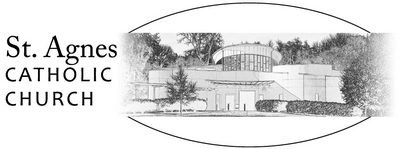Catholic Corner
February 14, 2021
This Wednesday we begin the Lenten season, marking this by the reception of ashes on our foreheads. Let’s look more closely at the symbols and meaning of the Lenten Season.
What are the ashes? They are the result of burning the blessed Palms of the previous Palm Sunday. Interestingly enough, the universal reception of ashes did not begin until the 11th century and was seen as a public sign of penance. Prior to this time, the season was understood as a time of preparation for baptism by those who would become Christian at the Easter Vigil.
In the very early Church, Holy Saturday was kept as a day of fast in preparation for the baptisms that would occur that night at the Vigil. In time days of fasting and preparation were slowly added in front of that day, eventually evolving into the forty days we are familiar with today. It was understood that these forty days would be days of intense preparation by those who had already committed years of their lives readying themselves for baptism.
In the early Church adult baptism was the norm, and those who wished to be baptized enter into a process that required them to dedicate themselves to this new Christian way of life. Prior to 313 CE (when Christianity became legal and the religion of the Roman Empire) being baptized meant being willing to die for their beliefs since Christianity was illegal and a capital crime. The custom of having someone sponsor them (speak up for them within the community) became common practice in part as a guarantee that they would not turn the community over to the authorities. By the 6th century CE adult baptism was in decline and infant baptism was on the rise. At the same time the sacrament of reconciliation was developing ritually and there was a new emphasis upon public penance for those who had committed serious sin. Lent becomes associated with these public penitents, who wore sack cloth and ashes, and who were publicly reconciled to the Church on Holy Thursday. By the 11th century the theology of Lent as a time of baptismal preparation had been lost and in its place those practices originally associated with the order of penitents were now associated with all the faithful.
The two-fold emphasis of baptism and penance during the season of Lent is restored with the reforms of Vatican II and the establishment of the Rite of Christian Initiation of Adults (RCIA). The documents of VCII are clear that the solitary focus on penance in the season of Lent is reformed so that “the two elements which are especially characteristic of Lent – the recalling of baptism or the preparation for it, and penance – should be given greater emphasis in the liturgy and in liturgical catechesis. It is by means of them that the Church prepares the faithful for the celebration of Easter” (SC 109).
Ash Wednesday continues to recall the penitential aspect of the season, while the baptismal emphasis is present through scripture (the use of Cycle A readings), and the structures and focus on the rites of the RCIA. These rites include the Rite of Sending, the Rite of Election, and the scrutinies (three Sundays in Lent).
This week (weather permitting) we will celebrate the Rite of Acceptance into the Order of Catechumenate. Catechumens are those people, who after a journey in faith now present themselves formally to enter the Church through the sacraments of Baptism, Confirmation and Eucharist. The Rites of the RCIA that we see in the Lenten Season include the Rite of Sending, a rite that acclaims that the community of St Agnes has found these catechumens truly ready to enter the final period of purification and enlightenment that will end with the celebration of the sacraments of initiation and we duly send them to the Bishop to be received accordingly as the Elect. At the end of the month, on February 27th our catechumens will be presented to the Bishop at the Rite of Election. There the Bishop will accept our affirmation that those we send are truly ready to enter this final stage and be led by the entire Church towards Christ. This is an important and solemn moment in their preparation, now known as the Elect they begin their final period of intense formation.
As we celebrate this season of Lent we keep in mind this two fold structure of the season, baptism and penance. As we watch others prepare for the sacraments of initiation we are asked to remember our own baptism and what that commitment means in our lives, for our actions and relationships. How do we live out the commitment made in the waters of rebirth to live for Christ? Reflecting upon the penitential nature of the season could demand of us actions that respond to this baptismal reflection, shifting the Lenten focus from solely “giving things up” to doing more to live out our baptism more fully.
